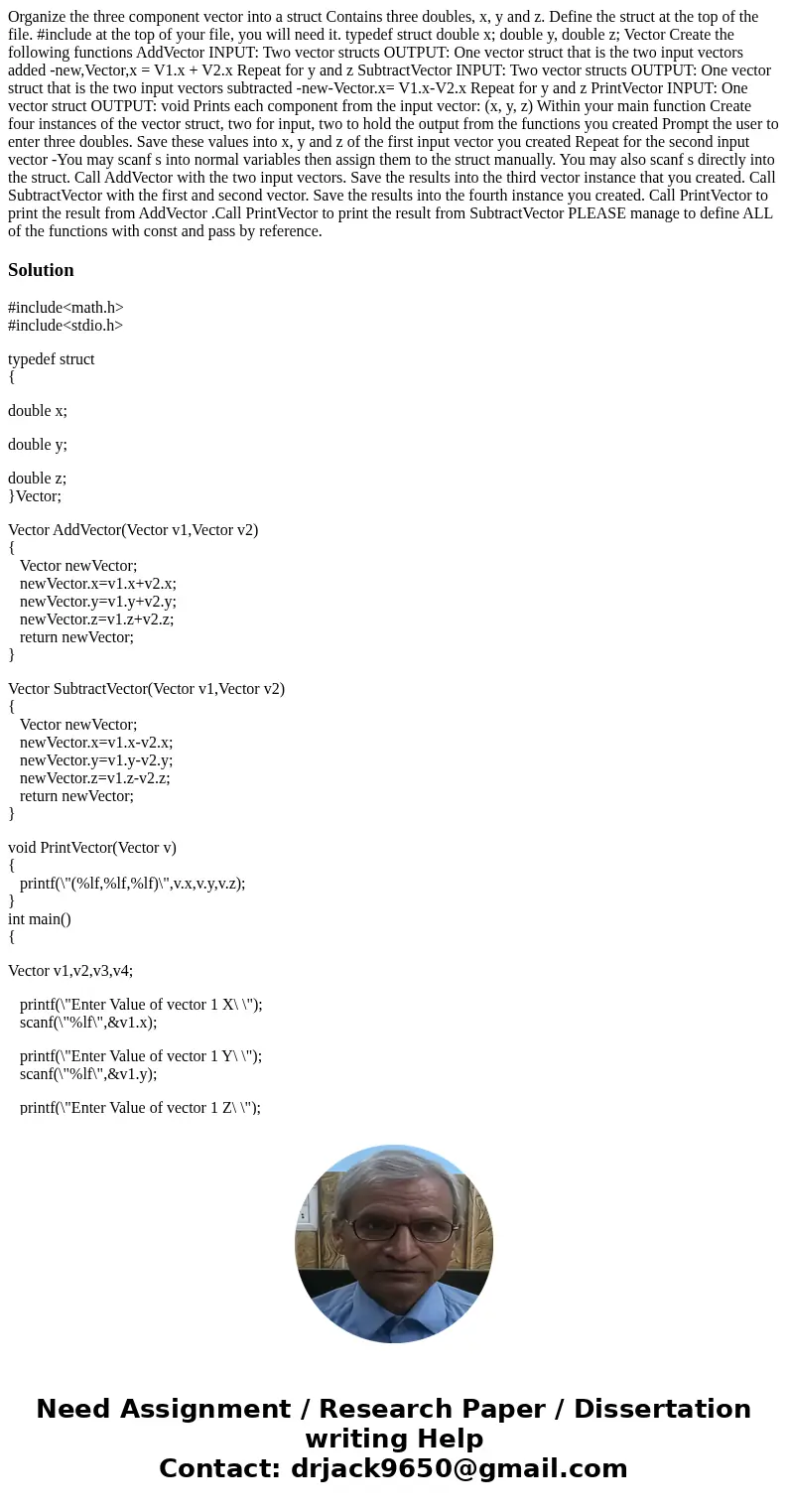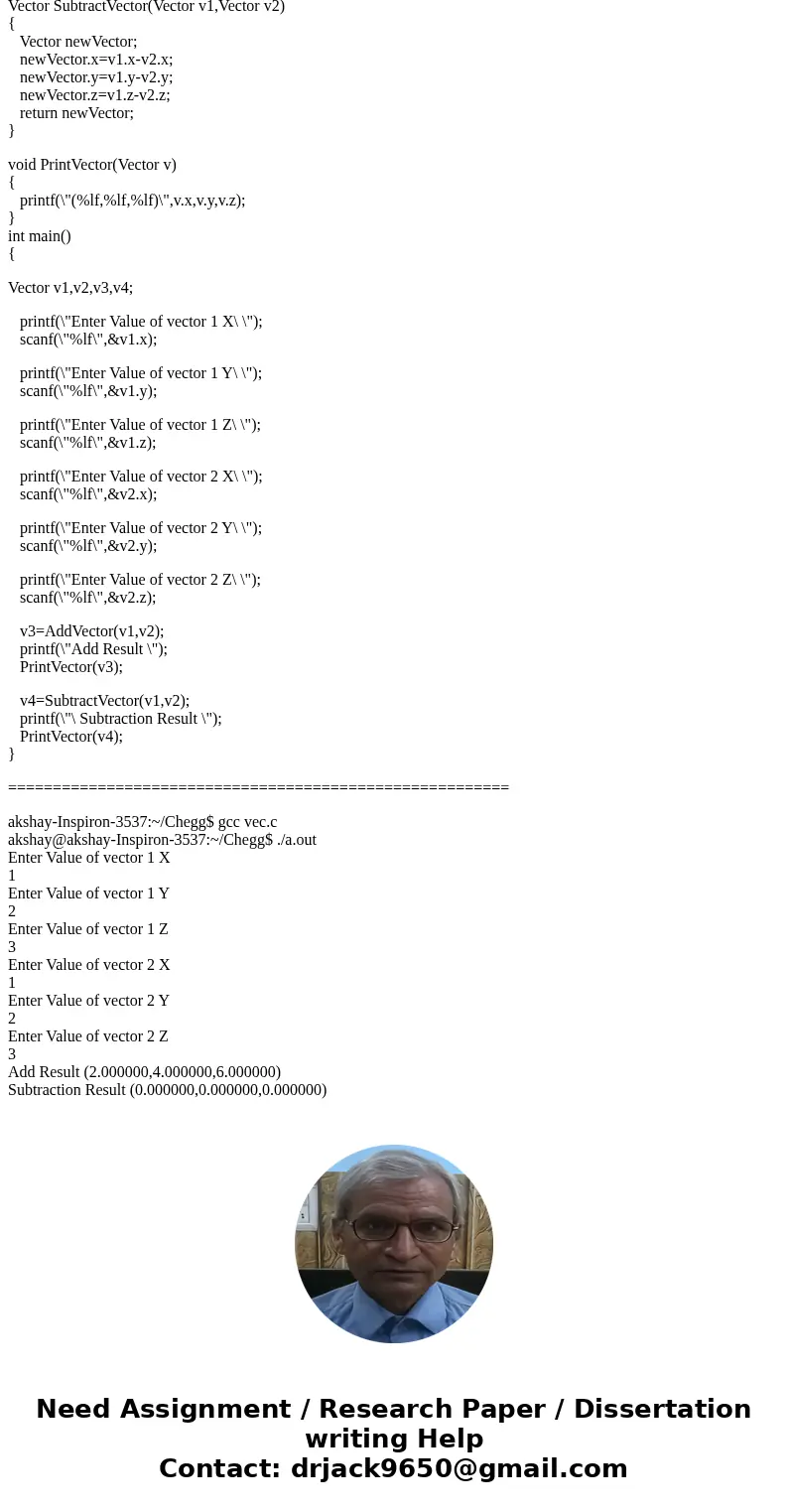Organize the three component vector into a struct Contains t
Solution
#include<math.h>
#include<stdio.h>
typedef struct
{
double x;
double y;
double z;
}Vector;
Vector AddVector(Vector v1,Vector v2)
{
Vector newVector;
newVector.x=v1.x+v2.x;
newVector.y=v1.y+v2.y;
newVector.z=v1.z+v2.z;
return newVector;
}
Vector SubtractVector(Vector v1,Vector v2)
{
Vector newVector;
newVector.x=v1.x-v2.x;
newVector.y=v1.y-v2.y;
newVector.z=v1.z-v2.z;
return newVector;
}
void PrintVector(Vector v)
{
printf(\"(%lf,%lf,%lf)\",v.x,v.y,v.z);
}
int main()
{
Vector v1,v2,v3,v4;
printf(\"Enter Value of vector 1 X\ \");
scanf(\"%lf\",&v1.x);
printf(\"Enter Value of vector 1 Y\ \");
scanf(\"%lf\",&v1.y);
printf(\"Enter Value of vector 1 Z\ \");
scanf(\"%lf\",&v1.z);
printf(\"Enter Value of vector 2 X\ \");
scanf(\"%lf\",&v2.x);
printf(\"Enter Value of vector 2 Y\ \");
scanf(\"%lf\",&v2.y);
printf(\"Enter Value of vector 2 Z\ \");
scanf(\"%lf\",&v2.z);
v3=AddVector(v1,v2);
printf(\"Add Result \");
PrintVector(v3);
v4=SubtractVector(v1,v2);
printf(\"\ Subtraction Result \");
PrintVector(v4);
}
========================================================
akshay-Inspiron-3537:~/Chegg$ gcc vec.c
akshay@akshay-Inspiron-3537:~/Chegg$ ./a.out
Enter Value of vector 1 X
1
Enter Value of vector 1 Y
2
Enter Value of vector 1 Z
3
Enter Value of vector 2 X
1
Enter Value of vector 2 Y
2
Enter Value of vector 2 Z
3
Add Result (2.000000,4.000000,6.000000)
Subtraction Result (0.000000,0.000000,0.000000)


 Homework Sourse
Homework Sourse